Proper management prevents problems
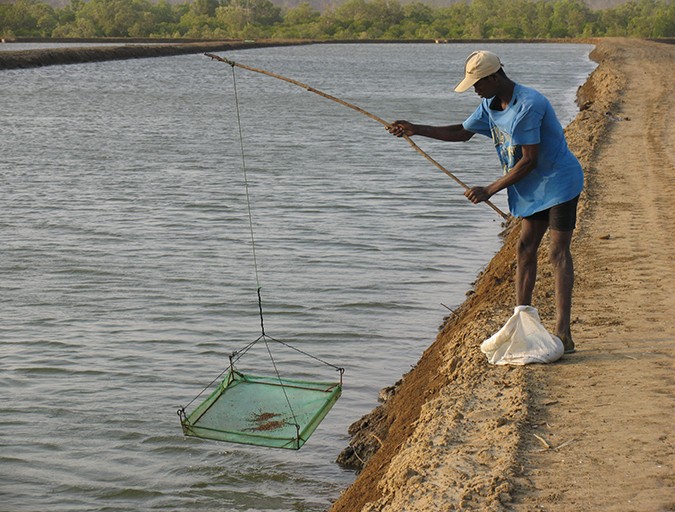
The major sources of organic matter in aquaculture ponds are organic fertilizer, remains of microorganisms — phytoplankton, zooplankton, and benthos — produced within the pond, feces of the culture animals, and uneaten feed. A relatively small proportion of the total organic matter input to ponds (usually less than 10 percent) is recovered in the form of harvested fish, shrimp or other culture animals. The rest of the organic matter is converted to carbon dioxide and water by respiration of the culture species and other pond biota, discharged in pond effluent, or it accumulates in the sediment.
Many producers believe that a large amount of organic matter in pond bottoms negatively impacts sediment condition and water quality during future crops. Although this opinion is true, organic matter decomposes quickly, and its accumulation is not usually as great as often believed. More importantly, with proper management, problems associated with organic matter accumulation in ponds can be avoided.
Factors controlling decomposition
The process of microbial decomposition of organic matter is controlled by several factors to include water temperature, pH, dissolved oxygen concentration, and the chemical composition of the organic matter itself. Bacteria and other organisms of decay decompose organic matter fastest at temperatures of 30 to 35 degrees-C — doubling the temperature in the range of 0 to 35 degrees-C usually will double the rate of decomposition.
Bacteria function best in the pH range of 7 to 8.5. When the pH is lower, decomposition by fungi is favored over that by bacteria — especially at pH less than 6. Fungi are not as efficient as bacteria in decomposing organic matter because they convert more of the organic matter to their own biomass than do bacteria.
Aquaculture ponds typically are limed to maintain a sediment pH above 7, there usually is plenty of dissolved oxygen in the water column, and the organic matter entering ponds tends to be easily decomposable.
Organic matter that contains a higher nitrogen content usually is easier to decompose than organic matter of lower nitrogen content. One reason is that organic matter of higher nitrogen content contains less fiber, but an equally important reason is that microorganisms of decay need nitrogen to produce their cells (biomass). An organic residue containing 3 or 4 percent nitrogen may decompose several times faster than one containing 0.5 to 1 percent nitrogen. Of course, ammonia or nitrate nitrogen dissolved in the water can be used by microorganisms to decompose organic matter of low nitrogen content. In aquaculture ponds, organic matter usually is low in fiber content and high in nitrogen content, and if some of it is not, there usually is ammonia and nitrate nitrogen in the water.
The ideal situation for accumulation of organic matter in water bodies is low water temperature and pH, and the predominance of fibrous vegetation such as reed swamp plants that are of low nitrogen content. These are the reasons that peat bogs often develop in shallow marshes, especially in cold climates.
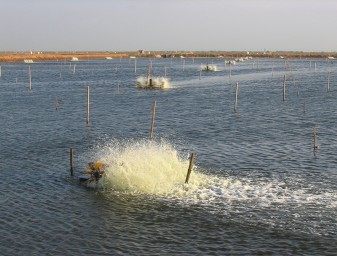
Decomposition in water column
Decomposition of organic matter occurs in the water column, but much of the particulate organic matter settles to the bottom of a pond. Decomposition is rapid in the layer of flocculent, fresh organic matter that accumulates at the sediment-water interface. Of course, part of this organic matter mixes with the underlying sediment or is covered with new sediment before decomposing.
In the water column and surface layer of sediment, there usually are several milligrams per liter of dissolved oxygen (aerobic conditions), but at a depth of a few millimeters into the sediment, microbial activity depletes molecular oxygen (anaerobic conditions). Aerobic decomposition completely converts organic compounds to carbon dioxide and water. But, many of the microorganisms that can decompose organic matter anaerobically do not completely convert organic compounds to carbon dioxide and water resulting in a larger amount of organic remains than present where decomposition is aerobic. There are, however, other anaerobic bacteria that can use these partially decomposed organic residues and eventually break them down to carbon dioxide and water, but the process is slow. Thus, decomposition is favored by presence of dissolved oxygen.
Decomposition rates
When organic matter decomposes, its components do not decompose at the same rate. Proteins, fats, and simple carbohydrate compounds decompose faster than fibrous components such as cellulose, lignins, tannins, and waxes. The majority of an organic residue will decompose within a few weeks or months, but some of the material will persist for years. Moreover, the microorganisms of decay excrete organic compounds, and when they die they become organic matter. The excretions of microorganisms and resistant remains of decomposing organic matter form large complex molecules of humic substances known as humus in terrestrial soils. Organic matter analogous to humus also accumulates in the sediment of aquaculture ponds. This material decomposes very slowly as compared to fresh organic matter that deposits on the bottom during aquaculture crops. The fate of organic matter in ponds is illustrated in Fig. 1.
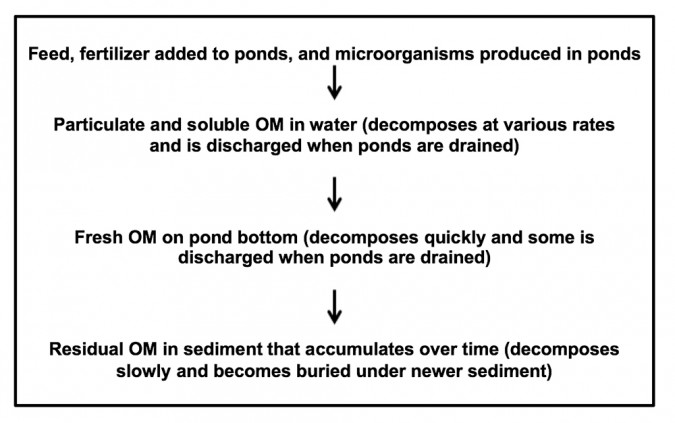
Organic matter and sediments in aquaculture ponds
Aquaculture ponds typically are limed to maintain a sediment pH above 7, there usually is plenty of dissolved oxygen in the water column, and the organic matter entering ponds tends to be easily decomposable. Around 90 percent of the organic matter entering a pond during a crop cycle normally is decomposed by the end of the crop cycle. Part of the remainder is discharged in effluent when the pond is drained, but a small portion remains in the sediment. When ponds are dried out between crops, most of the remaining fresh organic matter is decomposed.
Studies of ponds at Auburn University that contained about 0.2 to 0.5 percent organic carbon immediately after construction had 2 to 3 percent organic carbon after two or three years of use. However, even though sediment was never removed, the organic carbon concentration in 25- to 50-year-old ponds was still only 2 to 3 percent. Nevertheless, organic matter accumulates in aquaculture ponds because the depth of sediment in the deeper parts of the ponds accumulates — usually at an average rate of about 1 cm per year. Only the upper 4 to 5 cm layer of sediment exchanges substances with the water column, and most of the highly reactive organic matter at the sediment surface decomposes between crops.
The upshot is that accumulated organic matter usually does not cause problems in ponds over time. However, during a given crop, the decomposition of fresh organic matter imposes a sizeable oxygen demand. As a result, there is a limit to the amount of organic matter that can be added to ponds without causing problems with low dissolved oxygen concentration during the crop either at the sediment water interface or in the water column. Mechanical aeration is necessary to increase the rate that added organic matter decomposes during the crop. Of course, ponds became shallower because of sedimentation, and after a period of years, it is necessary to remove the sediment.
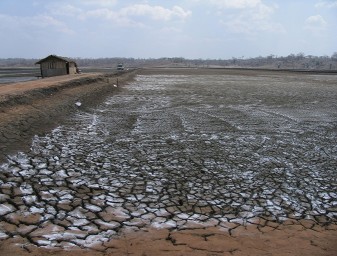
There is no evidence that routine sediment removal is necessary after each crop as often done in shrimp ponds. Even the common practice of drying ponds after each crop is more beneficial for sanitation (disease control) than for enhancing sediment quality. A recent study revealed that there was no difference in shrimp survival and production over a period of six to 12 crops in ponds that were dried out annually as compared to ponds that were harvested, immediately refilled, and not left fallow to dry out.
Perspectives
The best practices for managing ponds to minimize water quality problems resulting from organic matter are to avoid excessive fertilization that can lead to an overabundance of phytoplankton, apply high quality feeds according to good feed management to minimize uneaten feed and assure a good feed conversion ratio, apply liming materials to ponds with acidic waters and bottom soils, and avoid low dissolved oxygen concentration by limiting the intensity of culture or by providing adequate mechanical aeration. Sediment removal is not necessary after each crop in most ponds, but sediment may have to be redistributed over the bottom or removed if it becomes so deep that it reduces pond volume or otherwise interferes with management. Moreover, there have been no reliable studies demonstrating that bacterial augmentation (probiotic treatment) is necessary to enhance the decomposition of organic matter in ponds.
Now that you've reached the end of the article ...
… please consider supporting GSA’s mission to advance responsible seafood practices through education, advocacy and third-party assurances. The Advocate aims to document the evolution of responsible seafood practices and share the expansive knowledge of our vast network of contributors.
By becoming a Global Seafood Alliance member, you’re ensuring that all of the pre-competitive work we do through member benefits, resources and events can continue. Individual membership costs just $50 a year.
Not a GSA member? Join us.
Author
-

Claude E. Boyd, Ph.D.
School of Fisheries, Aquaculture and Aquatic Sciences
Auburn University
Auburn, AL 36830[117,100,101,46,110,114,117,98,117,97,64,49,101,99,100,121,111,98]
Tagged With
Related Posts
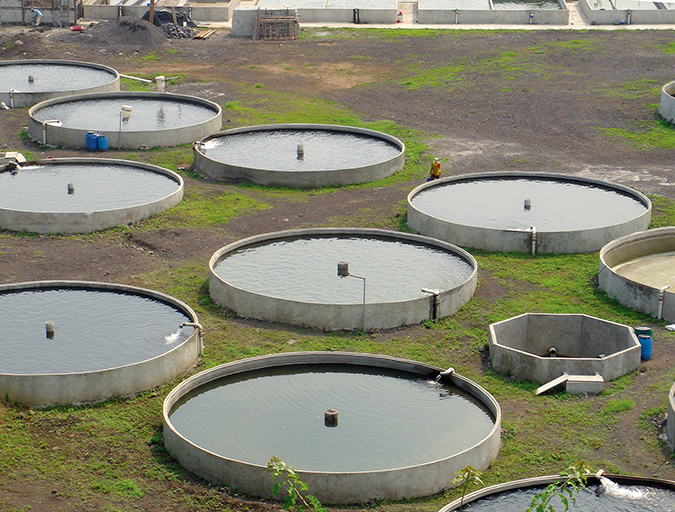
Responsibility
Calcium and magnesium use in aquaculture
Aquatic plants and animals get the essential nutrients calcium and magnesium from water and food. Calcium concentrations impact the hydration and development of eggs in a hatchery, where calcium carbonate precipitation can be troublesome.
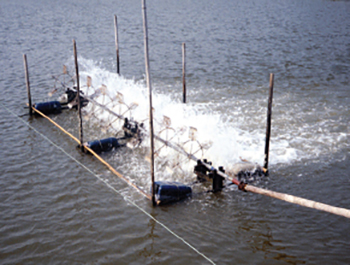
Responsibility
Efficiency of mechanical aeration
Although relatively expensive, mechanical aeration increases production. Asian-style paddlewheel aerators are widely used but are inefficient. Testing has led to more efficient designs that are now widely used in U.S. catfish and shrimp ponds.

Aquafeeds
A look at protease enzymes in crustacean nutrition
Food digestion involves digestive enzymes to break down polymeric macromolecules and facilitate nutrient absorption. Enzyme supplementation in aquafeeds is a major alternative to improve feed quality and nutrient digestibility, gut health, compensate digestive enzymes when needed, and may also improve immune responses.
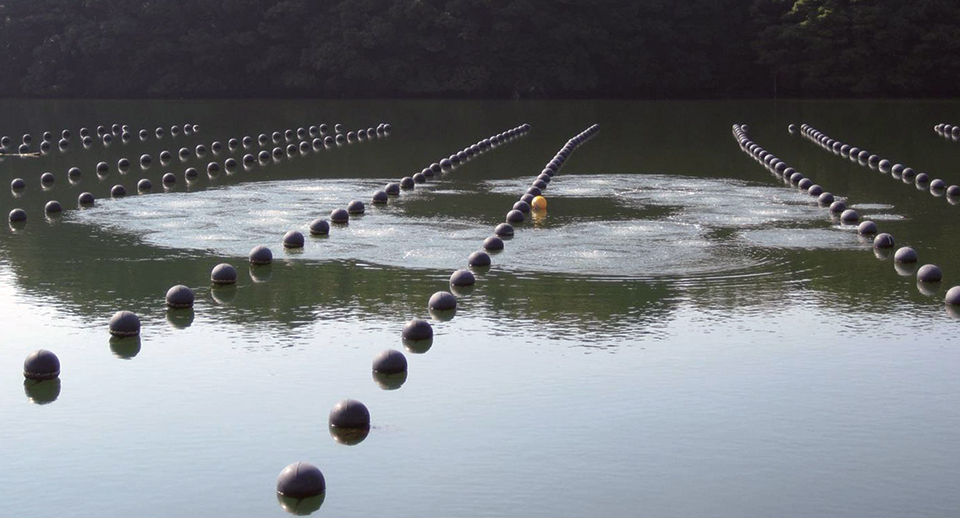
Health & Welfare
Artificial upwelling maintains favorable summer environment for farmed oysters
The summer season poses threats for oyster aquaculture worldwide. In addition to high mortality, poor oyster quality and health – especially in enclosed bays – are often attributed to water stratification, high temperatures and hypoxia.


